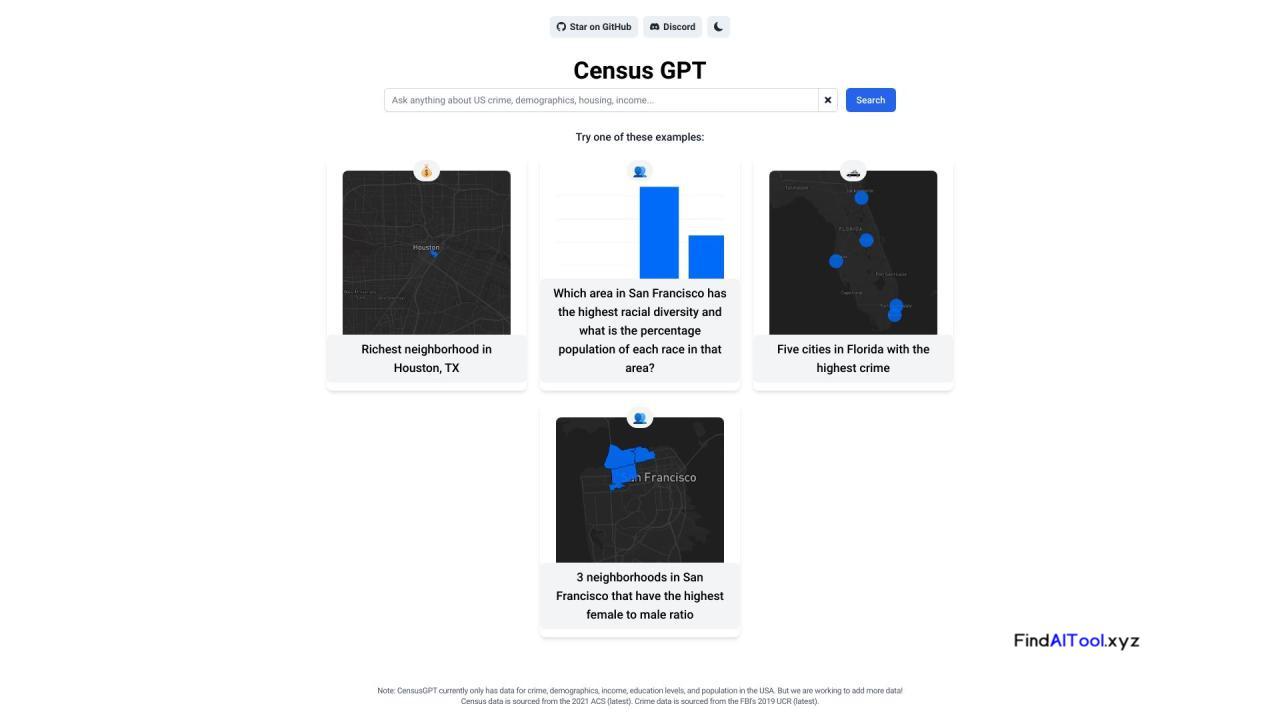Census GPT is an innovative natural language search engine designed to revolutionize how users interact with census data. This powerful tool allows individuals to search the vast census database using human-like queries, making complex demographic information more accessible than ever before.
At its core, Census GPT leverages advanced language processing capabilities to understand and interpret natural language inputs. Users can simply type their questions or requests into the search bar, and the system will retrieve relevant results from the census database. This intuitive approach eliminates the need for specialized knowledge of database structures or query languages, opening up census data to a wider audience.
The software’s key features include its natural language search functionality, comprehensive access to census data, and user-friendly browsing interface. These elements combine to create a seamless experience for users seeking specific demographic information, analyzing population trends, or conducting research on economic and social data.
Census GPT is particularly valuable for researchers, policymakers, urban planners, and businesses seeking insights into population dynamics. It enables quick and efficient retrieval of specific demographic data, facilitates the analysis of population trends and patterns, and provides easy access to economic and social information from census records.
By simplifying the process of accessing and interpreting census data, Census GPT empowers users to make data-driven decisions, conduct more thorough research, and gain deeper insights into population characteristics. This tool bridges the gap between complex demographic data and those who need to understand and utilize it, making it an indispensable resource for anyone working with population statistics and trends.










